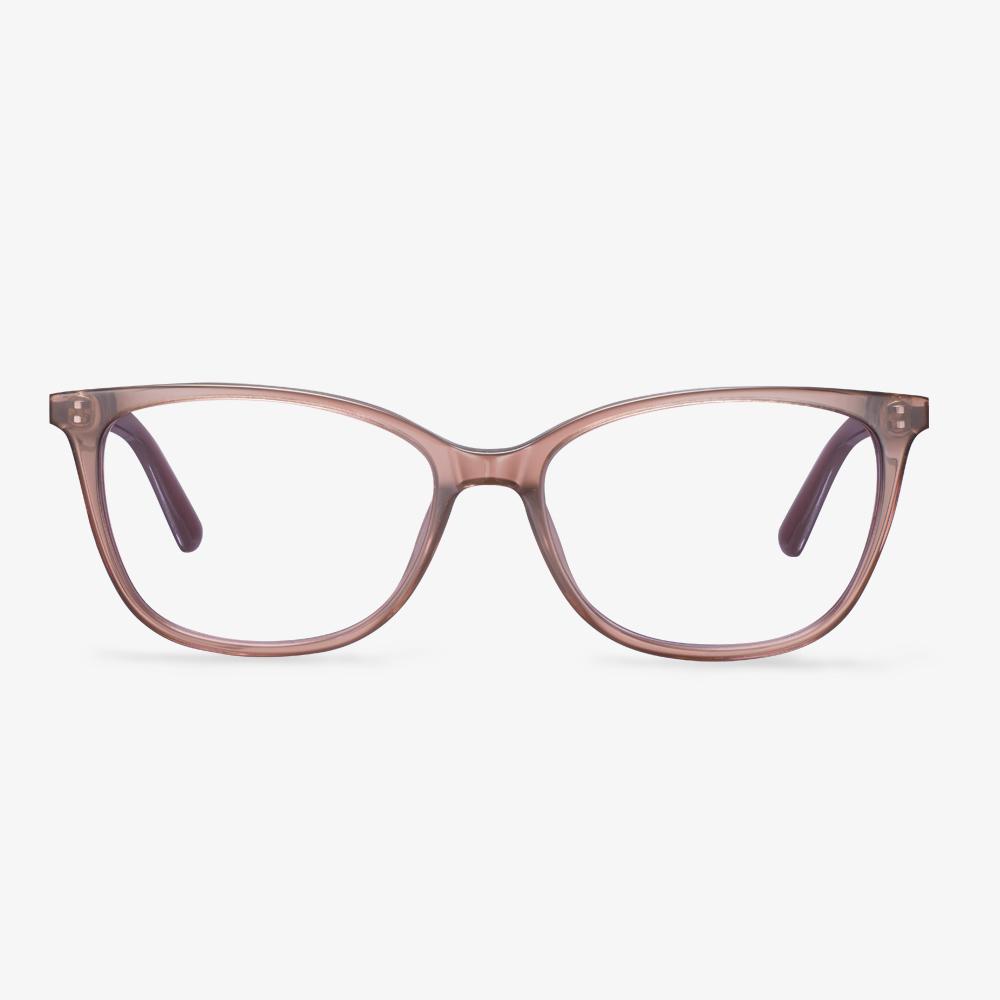How did the eyeglasses market develop?
With the discovery of clear glass paste in the 14th century, lenses became cheaper and easier to sell outside Venice. In the 15th century, the invention of the printing press made it easier to read, which greatly increased the demand for glasses. By the 16th century, frames were made of luxurious materials such as horn, leather, and whalebone. They used real turtle shells. The artificial plastic celluloid was later used to make frames that had never been seen before. In the 1950s, glasses became more popular than ever. Even today, glasses are considered one of the best fashion accessories. Different colors and styles of frames can be made according to the face shape. New technologies for lenses, contact lenses, and even frame materials continue to evolve year after year.
Oval face with glasses of various shapes
The oval face is the most perfect face shape. Whether it is size, shape, or contour, it is a more perfect face shape There are many types to choose from, and there are basically no minefields. But be sure to pay attention to the size of the glasses. Sometimes the size of the glasses is also very important. if you are not careful, it will highlight the incompatibility of your facial features. So make sure your glasses are not too big or too small. You should judge the size according to their face shape.
Are metal or plastic eyeglass frames better?
Experts agree that many materials of sunglasses will be targeted, with a high focus on the specific combination of materials used. The frame of your glasses depends on whether you want a stylish or mature look. You can wear different glasses for different situations and clothes. Metal sunglasses are suitable for formal situations or mature types of people, and not easy to damage. Plastic sunglasses are usually more diverse, and the design is changeable. They can be used for a variety of sites. They are suitable for each age group and can be selected according to your actual situation.
How To Choose Better Night Driving Glasses?
You should select light alloy material and polymer material with memory, collision resistance, and low friction coefficient characteristics. It can effectively prevent the damage to the eyes and face caused by the friction of the broken lens frame during use. Because of its specific molecular structure, the chemical resistance is good. In the high-temperature environment. it is not easy to deform and can withstand 350 degrees in a short time of high temperature, not easy to melt and combustion. The glasses made of this material are light and strong, and the ears will not be uncomfortable because of wearing the glasses for a long time.
Disadvantages of Progressive Lens
There are deformation areas under the left and right sides of the lens, which make the image blurry and irregular. It takes 1-3 weeks to get used to it. In addition, it has a narrower field of view in the near and middle distances, and long-term concentration on the narrow focal point can easily make the eyes tired. Suitable for people who need to alternate between distant, medium, and near vision.
However, with the development of science and technology, more and more progressive multifocal glasses have emerged that have a wider field of view, more comfortable wearing, and better meet the needs of eyes. Nowadays, the use rate of progressive lenses among middle-aged and elderly people abroad is quite high. Single-lens and double-lens reading glasses are gradually being replaced by progressive multifocal glasses.
Polycarbonate vs Plastic Lenses: Which One Is Better?
From the above information, you may have learned some features of polycarbonate glasses and plastic lenses. So, do you know which one is better?
Here are some a few differences between both lenses to determine which one is better.
- Polycarbonate lenses are more expensive than plastic glasses.
- Polycarbonate lenses are very resistant to tint compared with plastic lenses which accept tints.
- Polycarbonate glasses have inherent UV protection, while plastic lenses do not have.
- Polycarbonate glasses have higher impact resistance and offer greater protection than plastic lenses.
- Polycarbonate glasses are lighter than plastic glasses.
- Plastic glasses have a higher optical clarity than polycarbonate lenses.
So, from the above part, you may have learned which one is better and you may have a decision of how to choose.
Can you use rubbing alcohol to clean glasses?
The stimulus effect of alcohol will damage the coating of the lens. If the coating of the lens is destroyed, the transmittance of the lens will decrease and the clarity of the lens will decrease. In addition, if the film layer of the lens is damaged, the scratch resistance and anti-reflective properties of the lens will decrease. Especially if the film layer of the lens is damaged severely, the lens is easily scratched, which directly affects the vision. Therefore, when cleaning the lens, you must be careful not to use irritating cleaning.











































